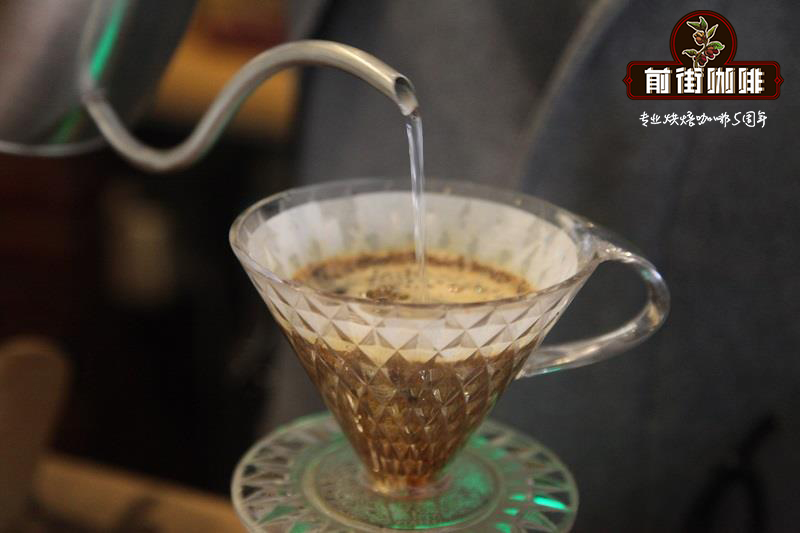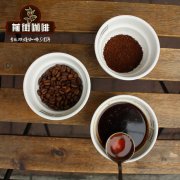Discussion on coffee knowledge | what's the difference between aroma, aftertaste and aftertaste of coffee?

Aroma and aftertaste
You asked us, "Why is the aroma and aftertaste of coffee so different?" Even if the same chemicals may be involved? This is what we found:
The aftertaste of coffee refers to the taste and aroma left in the mouth after sucking. Compared with other drinks, the aroma of coffee spreads for a long time: the aftertaste of espresso can last up to 15 minutes.
Depending on the coffee, this may not be a good thing. However, regardless of the quality of your coffee, the rest of the taste is always different from that of brewing (and often less pleasant). Coffee that tastes great when you drink it will leave a lingering smoky or metallic taste in your mouth.
So why only some of these flavors and flavors linger in the mouth? Why does it seem to be the most unpleasant flavor?
Aftertaste or aftertaste?
Strictly speaking, taste refers to what we experience on the tongue: sweet, salty, sour, bitter, fresh, and maybe one or two others. When we talk about the aftertaste of coffee, we are usually actually talking about taste-the combination of taste and aroma. Researchers sometimes switch to "odors" to distinguish them from the aftertaste.
In the strictest sense, only considering the basic taste, the aftertaste of coffee is different from that of drinking it. Different compounds have different aftertaste lengths: caffeine, for example, has a longer aftertaste than quinine. This means that the taste balance in the aftertaste may be different from that of the first taste.
However, in terms of aftertaste, the biggest difference lies in the flavor, not the flavor. This is because certain molecules remain in the mouth longer than other molecules after sucking coffee. These molecules enter the nasal cavity through the back of the throat, so we continue to experience their aroma after swallowing most of the coffee. This is called the sense of smell behind the nose. The act of sucking actually increases the sense of smell behind the nose because the movement of the pharynx pushes the aroma into the nasal cavity.

Which molecule remains?
The aroma compounds with the longest adhesion time are considered to be the largest and smallest water-soluble molecules. Larger molecules have the least volatility, which means they are less likely to evaporate. Aroma molecules need to be vaporized to reach the nasal cavity, and the weight of larger molecules means it takes longer for them to escape the liquid and reach the nose. Many of the larger molecules in coffee are produced by dry distillation during roasting and are associated with woody, spicy and rough flavors.
Less water-soluble molecules also remain in the mouth after sucking because they are likely to bind to or dissolve in coffee oil. After sucking, the oil covers the mouth and retains odor molecules, which are released in the form of gas or gradually dissolved in saliva. The compounds soluble in coffee oil have many of the bitter and roasting flavors of coffee.
Natural surfactants (such as melanin) found in coffee can make coffee oil cover the mouth more effectively. Espresso contains high levels of oil and melanoid, which is one of the reasons why espresso has such a long aftertaste. Since both macromolecules and less water-soluble molecules are associated with some of the more unpleasant flavors in coffee, it can explain why the aftertaste is usually not as pleasant as the first taste.
After tasting
Although we expect larger and less water-soluble molecules to remain in the mouth, we don't know exactly which molecules cause the aftertaste of coffee. In wine, the aftertaste has been studied in more detail, indicating that it may not be limited to size and solubility.
In wine and coffee, different flavors last for different periods of time, and the most volatile compounds produce fruit or flower aromas that disappear first. However, polyphenols in wine interact with different flavor compounds in different ways, thus affecting our perception of them and the ease of their volatilization, which will affect their aftertaste. Coffee also contains polyphenols, which may have similar effects.
In a study that directly measured which molecules were retained in the mouth, the researchers found that a small hydrophilic molecule called guaiacol stayed longer than expected. Guaiacol is a small molecule that is expected to dissolve easily in water, but the researchers speculate that polyphenols help it bind firmly to proteins on the inner surface of the mouth, thus promoting the aftertaste.
The researchers hypothesized that this was due to the molecular structure of Guaiacol. Guaiacol contains a phenol ring that binds to a similar ring in polyphenols. Molecules with this structure usually provide smoky, spicy and medicinal aromas for coffee. However, some related molecules also have positive flavors, especially those similar to vanilla-in fact, vanillin itself is a phenolic compound. Maybe we have this effect thanks to some of the more pleasant flavors in the coffee aftertaste.
Important Notice :
前街咖啡 FrontStreet Coffee has moved to new addredd:
FrontStreet Coffee Address: 315,Donghua East Road,GuangZhou
Tel:020 38364473
- Prev

Brazilian Ipanema Coffee Manor introduces the flavor of yellow bourbon after fruit pulp sun treatment.
Founded in 1969, Brazil's Ipanema Manor specializes in the production of high-quality Brazilian boutique coffee with traceability (Traceability). The estate is equipped with highly modern coffee processing facilities and strict quality control. Ipanema currently has 5500 hectares of plantable land, scattered in three historic coffee farms Conquistar, Capoeirinha and R.
- Next

Ethiopia Yega Sheffivoka Cooperative introduces the unforgettable flavor of Waka.
Ethiopia Yega Sheffivoka Cooperative Solar country: Ethiopia: Yega Sheffield altitude: 1850-2100m treatment: solarization Grade: G1 Variety: native species Heirloom Flavor description: intense and charming strawberry and tropical fruit aromas, high sweetness and richness, chocolate-like finish, red wine aromas. Woka cooperation
Related
- Detailed explanation of Jadeite planting Land in Panamanian Jadeite Manor introduction to the grading system of Jadeite competitive bidding, Red bid, Green bid and Rose Summer
- Story of Coffee planting in Brenka region of Costa Rica Stonehenge Manor anaerobic heavy honey treatment of flavor mouth
- What's on the barrel of Blue Mountain Coffee beans?
- Can American coffee also pull flowers? How to use hot American style to pull out a good-looking pattern?
- Can you make a cold extract with coffee beans? What is the right proportion for cold-extracted coffee formula?
- Indonesian PWN Gold Mandrine Coffee Origin Features Flavor How to Chong? Mandolin coffee is American.
- A brief introduction to the flavor characteristics of Brazilian yellow bourbon coffee beans
- What is the effect of different water quality on the flavor of cold-extracted coffee? What kind of water is best for brewing coffee?
- Why do you think of Rose Summer whenever you mention Panamanian coffee?
- Introduction to the characteristics of authentic blue mountain coffee bean producing areas? What is the CIB Coffee Authority in Jamaica?

